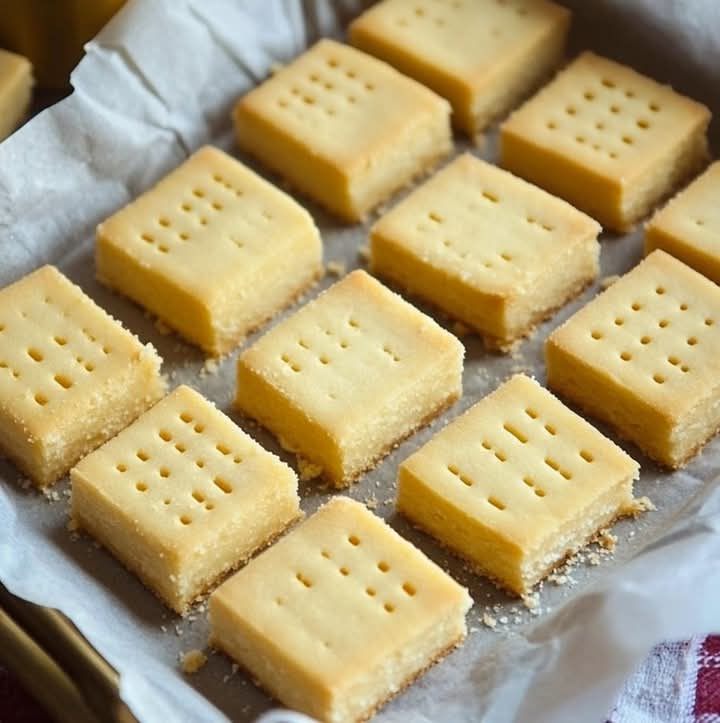Introduction
Few baked goods carry the cultural significance and universal appeal of authentic Scottish shortbread. With its origins dating back to medieval Scotland, this simple yet elegant treat has stood the test of time, evolving from a luxury reserved for special occasions to a beloved everyday indulgence around the world. The magic of traditional Scottish shortbread lies in its perfect balance of simplicity and sophistication – just three basic ingredients transformed through technique and tradition into something truly extraordinary.
What sets genuine Scottish shortbread apart is its distinctive texture – simultaneously crumbly and melt-in-your-mouth tender, with a rich, buttery flavor that lingers pleasantly on the palate. Unlike many modern cookie recipes that rely on numerous ingredients for complexity, classic shortbread demonstrates how restraint can yield perfection. The quality of each component becomes paramount, with premium butter taking center stage in creating that signature taste and texture that has made this treat famous for centuries.
This recipe stays true to traditional methods while offering helpful guidance for bakers of all skill levels. Whether you’re looking to connect with Scottish heritage, searching for the perfect tea-time accompaniment, or simply craving a buttery, not-too-sweet treat, this authentic shortbread recipe delivers results worthy of a Scottish grandmother’s approval. The process may be simple, but the results are nothing short of sublime.
The Recipe: Authentic Scottish Shortbread
Ingredients
- 1 cup (225g) unsalted butter, softened to room temperature
- 1/2 cup (115g) granulated sugar
- 2 cups (250g) all-purpose flour
- A pinch of fine sea salt
Instructions
Preparing the Dough
Begin by ensuring your butter is properly softened – it should yield gently to pressure but not be oily or melted. In a large mixing bowl, cream the butter and sugar together until just combined. The mixture should be pale and fluffy, but avoid overbeating as this can incorporate too much air and affect the shortbread’s characteristic dense texture.
Sift the flour and salt together, then gradually incorporate into the butter mixture. Use a wooden spoon or your hands to gently work the flour into the dough. The key here is a light touch – stop mixing as soon as the flour is incorporated. Overworking the dough will develop gluten and make the shortbread tough rather than tender.
Shaping and Baking
Traditional Scottish shortbread can be shaped several ways. For authentic petticoat tails (the classic round shape scored into triangles), press the dough evenly into a 9-inch round pan, prick all over with a fork, and score into wedges without cutting all the way through. For fingers, pat the dough into a rectangle about 1/2-inch thick on a parchment-lined baking sheet, then score into fingers.
Chill the shaped dough for 30 minutes before baking. This crucial step helps prevent spreading and ensures the proper texture. Preheat your oven to 325°F (160°C) during the last 10 minutes of chilling.
Bake for 35-45 minutes until the shortbread is lightly golden around the edges but still pale in the center. The low and slow baking preserves the delicate texture. Immediately after removing from the oven, recut along your scored lines. Let cool completely in the pan before serving – shortbread continues to firm up as it cools.
Conclusion
Scottish shortbread represents the pinnacle of baking minimalism, where ingredient quality and technique transform basic components into something extraordinary. This recipe, faithful to centuries-old traditions, yields shortbread with that perfect sandy-yet-melting texture and rich, pure butter flavor that has made this treat endure through generations.
What makes shortbread truly special is its versatility. It serves equally well as an elegant dessert, a sophisticated gift, or a simple afternoon treat with tea. The clean flavor profile provides the perfect canvas for creative variations – a drizzle of chocolate, a sprinkle of citrus zest, or a dusting of cinnamon can personalize it while maintaining its essential character.
More than just a cookie, Scottish shortbread connects us to culinary history. Each bite carries the weight of tradition, the simplicity of quality ingredients, and the care of handmade preparation. In our world of overly complicated desserts and artificial flavors, authentic shortbread stands as a testament to the power of purity in baking. Once you’ve experienced homemade shortbread at its best, the store-bought version will never compare.
This recipe offers more than instructions – it provides a connection to Scottish heritage and an opportunity to master a baking classic. The process may be simple, but the results are profound. Perfect your technique, use the finest ingredients, and you’ll create not just shortbread, but edible artistry that honors its storied past while delighting modern palates. Whether enjoyed alone with quiet appreciation or shared with loved ones, properly made Scottish shortbread remains one of life’s most perfect simple pleasures.
